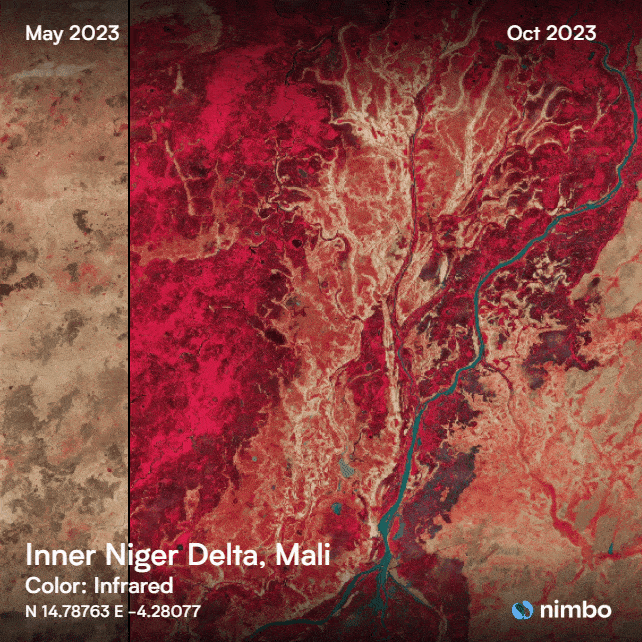
Inner Niger Delta seen from space
Rainy season in Mali's inland lung
Behold the amazing seasonal transformation occuring in the Inner Niger Delta region during the second half of the year, pictured here in infrared colorization. The redder the area on the picture, the greener it is in real life.
This 300-km long wetland area in central Mali experiences a distinct rainy season, generally from June to October. The significant amount of rainfall pouring over the area during those months is essential for its ecology, agriculture, and the livelihood of the local population.
Water in the Niger Delta: : a blessing and a curse
Rainy season in the Inner Niger Delta leads to annual flooding, creating a vast, temporary inland sea. This phenomenon is both a blessing and a threat. While it replenishes the delta’s wetlands, nourishes vegetation, and supports biodiversity, it can also lead to displacement and the loss of homes for local communities. Crops can suffer widespread destruction too, in a region where rice, millet, or sorghum production is crucial for food security. On the other hand, increased water levels also means expansion of fish habitats, a vital resource for the livelihood of many communities.
Life in the Delta threatened by climate change
Water and aquatic ecosystems are vital to over two million people in the Inner Niger Delta, and this already fragile balance is threatened by climate change. Future climate projections indicate a heightened risk of drought, heat waves, and altered rainfall patterns for the Delta’s communities, further aggravated by high population growth. These impacts compound livelihood insecurity and water resource competition, potentially escalating existing conflicts within and between communities.

